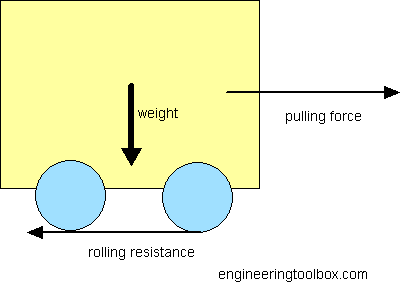Rolling resistance

Rolling resistance refers to the force resisting movement by a rolling object, such as a tire. It is a form of friction. When driving, tires continually deform - the section touching the road gets flatter. It is obvious to spot, if one looks at a parked truck. This deformation causes the tires to heat up. The more the tires deform, the more energy they take away from driving. This is one of the reasons that sports and racing cars use tires with relatively small and stiff sidewalls - to decrease tire deformation.
Rolling resistance is a particularly relevant topic when discussing both fuel efficiency and fuel economy. According to the US Department of energy, 5-15% of light-duty fuel consumption is a result of tires, and an improvement of up to 3% in fuel consumption is possible by properly inflating tires (this decreases rolling resistance).[2]
This is also why rail cars use steel wheels on steel tracks; the lack of deformation in either track or wheel means very little rolling resistance, even compared to that of the pneumatic tires of a car. In fact it's roughly 50x[3] less!

